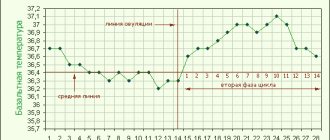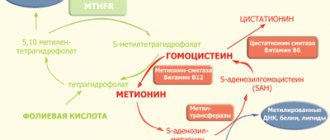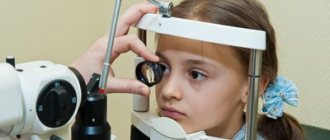For many parents, delays in child development have become a pressing problem. But stupor and despair, which are the first and natural reaction to receiving such a diagnosis, are replaced by a firm intention to change something for the better and help your child catch up with their peers. From this moment a long, sometimes difficult path begins, but the steady improvement in the results and achievements of the little man become the best reward for all the efforts and efforts made.
What is developmental delay and types
Developmental delay is a violation of the normal rate of development of one or another physical or mental aspect in children of different ages. The following types of delays in child development are distinguished:
- SRD – delayed speech development;
- ZPRR – psychospeech;
- ZPR - mental;
- ZMR – motor;
- PMMR – psychomotor.
In most cases, developmental delays can be corrected. But the effectiveness of the measures taken largely depends not only on the quality of implementation of medical recommendations, but also on how early the parents sought help.
Classifications
Classification by Pevzner and Vlasova
M. S. Pevzner - defectologist, psychiatrist, psychologist, candidate of medical sciences and doctor of pedagogical sciences. Professor. T. A. Vlasova is a psychologist, defectologist, Doctor of Psychology, professor, academician. Years: 1972-1973.
- Uncomplicated psychophysical and mental infantilism
The emotional-volitional sphere corresponds to the development of younger children. Playful activity prevails over cognitive activity. This leads to inattention and learning problems.
- Secondary ZPR
The exhaustion of mental functions is caused by various biological factors that occurred during pregnancy or in the first year of the baby’s life.
Lebedinskaya classification
K. S. Lebedinskaya is a child psychiatrist and defectologist. Year: 1982. The basis is the classification of Pevzner and Vlasova, supplemented and expanded.
- Constitutional ZPR
Corresponds to uncomplicated mental and psychophysical infantilism according to the classification of Pevzner and Vlasova. Such children show bright, but superficial and unstable emotions. They are always in a high mood, they are mediocre and naive. They are distinguished by their gracefulness - an infantile body type. ZPR is caused by hereditary factors and complications during pregnancy.
- Somatogenic ZPR
Firstly, it occurs against the background of diseases suffered by the baby in the first year of life. Secondly, it is complicated by neurotic deviations. Such children are not self-confident, fearful, capricious, and feel their physical inferiority. All this ultimately leads to somatogenic infantilism - delayed emotional development.
- Psychogenic mental retardation
The main reason is unfavorable upbringing conditions, starting from a very early age and lasting for a long time.
- Cerebral-organic mental retardation
The most common type of ZPR. I. F. Markovskaya (Candidate of Psychological Sciences, Associate Professor) identifies another mini-classification within this group (1983).
1. Mental instability. Manifests itself in the form of hyperactivity, excessive noise, loudness, rudeness and conflict. But these children’s emotions are short-lived, so within a minute they will be playing with those with whom they just quarreled or even fought.
2. Mental retardation. Such children are dependent, indecisive, timid, slow, and too attached to their parents. They do not participate in joint outdoor games with others, they quickly get lost and cry when something is demanded of them.
Kovalev's classification
V.V. Kovalev - psychologist, psychotherapist. Year - 1979.
This is a classification of mental retardation caused by biological factors:
- dysontogenetic - mental infantilism;
- encephalopathic - organic lesions of the nervous system;
- secondary due to sensory defects - visual and hearing impairments;
- social deprivation - hospitalism.
Today, Lebedinskaya’s classification is most actively used in practice. Although she will soon be 40 years old. In connection with new standards of training and the changed realities of modern life, experts have long been talking about the need to create a more relevant typology of ZPR.
Delayed speech development (SDD)
Speech is unique to humans and is the basis of overall development. It is this that is recognized as the leading indicator of how a child perceives the world around him and reflects his readiness to interact with it. Therefore, the occurrence of its violations is a reason for immediate action. But we must not forget that each child develops at his own pace and you should not look for problems where there are none.
The criterion for assessing the degree of speech development can be considered generally accepted norms developed for each age, i.e. the minimum, the presence of which is an indicator of normal development. If parents notice that the baby’s speech does not reach the norm in many respects, they should definitely make an appointment for a consultation with a specialist. But it is extremely rare that speech development delay occurs in isolation. This is usually accompanied by a lag in mental development, i.e. the child is diagnosed with psychospeech developmental delay (PSRD).
In most cases, speech delays in children are detected before the age of 4 years.
When correcting disorders of psycho-speech development, applied behavior analysis or ABA therapy is also used. The point is that any behavior of a child leads to certain consequences. By influencing these consequences it is possible to correct the child’s behavior.
ZRR can occur as a result of:
- damage to the central nervous system: aphasia - a violation of already formed speech, which is observed with brain damage (not only the speaking function may suffer, but also understanding the speech of another person);
- alalia – complete absence or severe underdevelopment of speech;
- dysarthria - incorrect pronunciation or difficulty pronouncing certain sounds and letters.
- stuttering – frequent repetition of sounds, their lengthening, constant stops in speech;
- mutism – lack of response to questions addressed to the child, although the ability to speak and understand others is preserved;
- Sudromutism is a functional, i.e., reversible loss of speech.
- rhinolalia - distortion of many sounds, which is caused by violations of the velopharyngeal closure;
- mechanical dysplasia - changes in the structure of organs involved in the pronunciation of sounds.
Very often it is not possible to fully determine which factor caused the delay in speech development. However, today it is believed that RRD can be caused by:
- birth injuries of various kinds;
- pregnancy pathologies;
- diseases of the brain, including developmental anomalies, ischemic events, leukodystrophy, tumors;
- hearing impairment;
- head injuries;
- disorders of the development of facial and oral muscles.
Not the least role in the occurrence of mental retardation is played by heredity and mental disorders. Sometimes the reasons for speech problems lie in psychological pressure on the child and gross mistakes in upbringing. But in any case, the problem should be dealt with and measures should be taken to resolve it as quickly as possible. Otherwise, delayed speech development may cause problems in the child’s communication with peers, not to mention poor performance at school and problems with future employment.
When to see a doctor
The following signs should be considered as a reason to contact a specialist:
- lack of an emotional reaction to what is happening around in the 4th month of life, in particular, the child does not smile at his parents, does not perk up when they appear, etc.;
- does not coo and does not try to make repeated sounds like “ba-ba-ba” at 8-9 months and generally gives the impression of being quiet;
- difficulty chewing at 18 months, which may result in the child choking when trying to eat a piece of apple;
- the child does not speak simple words at 1.5 years old or does not try to learn new ones at 2 years old if he has managed to master several simple ones;
- a child’s active vocabulary at 2.5 years is less than 20 words, he cannot name parts of the body or familiar objects, and cannot form phrases of 2 or more words;
- at 3 years old he speaks completely unintelligibly even for his parents, cannot construct a sentence of several words, does not understand simple stories, explanations from parents, or speaks very slowly, stretching out the endings of words, or, on the contrary, speaks too quickly, swallowing endings; sometimes children with developmental disabilities cannot construct sentences on their own, and express themselves using phrases from cartoons heard from adults.
With psychospeech developmental delay, children usually have an infantile appearance and poorly developed muscles. They are little emotional, have memory and thinking disorders, have weak imagination and tend to perform monotonous actions. Since all mental processes proceed slowly, which makes it difficult for children with mental retardation to switch from one thought to another.
CPRD is often combined with cerebral palsy.
Diagnostics of ZRR
To effectively influence a problem, you need to determine its cause and severity. For these purposes, a complex of studies is carried out, including:
- assessment of the level of speech development and the degree of deviation from the norm;
- examination by an otolaryngologist and a hearing test by an audiologist;
- tests aimed at assessing the degree of speech understanding;
- psychological tests and analysis of the nature of interaction between adults and children;
- CT;
- MRI;
- EEG;
- electromyography;
- Ultrasound with Doppler of the brain, etc.
However, it is often not possible to accurately determine the cause of RRD. In such situations, the nature of therapy is based only on the nature of existing deviations from the norm and complex treatment is carried out aimed at improving the functioning of the nervous system.
Treatment of ZRR
The earlier a delay in speech development is detected, the easier and more productive the correction will be and the child will have a greater chance of full recovery. In all cases, therapy is complex, but it is always developed individually in accordance with the nature of the problems detected.
Components of treatment for speech delay may include:
- Drug therapy - specific drugs and their dosages are selected based on the diagnosis and age of the child by a neurologist and sometimes a psychiatrist. The main goal of drug treatment in most cases is to stimulate and ensure normal nutrition of brain cells. Therefore, complex vitamin preparations, amino acids and others are usually prescribed.
- Physiotherapy – the main types of physical influence indicated for cerebral renal development are magnetotherapy and reflexology. With their help, it is possible to activate the work of the relevant parts of the brain and improve the quality of speech. In particular, magnetic therapy sessions contribute to the formation of new functional connections.
- Work with a speech pathologist and speech therapist - classes are always conducted individually and are aimed at eliminating speech deficiencies. They are organized in a playful way, which allows the child to perceive them not as an element of treatment, but as a pleasant pastime. As part of working with a speech therapist, a special massage is performed, the nature of which depends on the pronunciation of which sounds are affected.
Hippotherapy, dolphin therapy and other similar types of work with animals are indicated for children with developmental delays.
A very effective way to overcome the problem of RDD is manual therapy with elements of osteopathy.
Psychological characteristics
A child with mental retardation has features of mental development that differ from the symptoms of other similar pathologies. This is necessary to know to differentiate the diagnosis.
Differences from mental retardation:
- partial rather than complete impairment of cognitive activity;
- high potential for further development;
- It is not the mental functions themselves that suffer, but the prerequisites for intellectual activity (phonemic hearing, speech, attention);
- spasmodic dynamics of mental activity;
- ability to cooperate with adults;
- the presence of emotions in gaming activities;
- a vivid manifestation of emotion;
- often have a knack for drawing.
Differences from pedagogical neglect:
- lack of education and attention from adults is only one of the reasons, while in neglected children it is the only one;
- behavior is caused by deviations in the emotional-volitional sphere and cognitive abilities, and not by problems in moral and legal consciousness;
- are rarely distinguished by deviant behavior and rebellious character;
- know how to interact with adults.
The success of treatment and correction will depend on the correct diagnosis.
Psychomotor development delay (PMDD)
Delayed psychomotor development is diagnosed in many young children, which may be caused by minor organic changes in the state of the brain or disruption of its functioning. Such changes can be congenital, result from a birth injury, or be acquired by a child during life. In the latter case, PMTCT may be the result of a hereditary predisposition, as a result of which manifestations of delayed psychomotor development may occur against the background of an infectious disease, poisoning, metabolic disorders and social factors. Therefore, the impetus for the development of MTCT can be inattention to the child, lack of love for him, pedagogical neglect, poor living conditions, etc.
Thus, a distinction is made between nonspecific and specific delay in psychomotor development. With a nonspecific or benign delay, there are no brain pathologies, due to which it can be easily corrected and, with the creation of an adequate external environment and special conditions, goes away completely, and the child catches up with his peers in all respects.
With specific VMR, damage to certain brain structures is observed, which leads to a lag in the development of motor, mental, and speech functions. This is accompanied by the appearance of characteristic symptom complexes and requires the appointment of treatment appropriate to the situation, without which PMTCT cannot be fully compensated. Initially, it is usually possible to notice a lag in only one of the parameters, but over time, a specific delay in psychomotor development leads to a uniform impairment of all functions.
PVMR can occur with varying degrees of severity, based on which they distinguish:
- PVMR of the 1st degree is a lag in psychomotor development by no more than 1 age interval, with an observed tendency to reduce its severity as the child grows older. With this form, the developmental delay is quickly compensated, and the child catches up with the nature of the development of mental, motor and speech functions, but only if proper treatment is carried out.
- VMR of the 2nd degree is a lag of more than 1 age period against the background of the absence of a tendency towards gradual compensation and a reduction in the severity of the delay in psychomotor development or even a tendency to increase the deficit. With this form, it is very important to choose the right treatment, but this does not guarantee full compensation of psychomotor functions, but can only make it possible to avoid an increase in time deficit as the child grows older.
- 3rd degree PMTCT is a delay in the psychomotor development of a child by more than 1 or even 2 age periods. This is the most severe form of PMTCT, accompanied by a steady increase in the lag in the psychomotor development of a child of the same age. At the same time, motor, speech, and mental functions may not even differ in their developmental tendency.
Signs
Delayed psychomotor development can begin to manifest itself at any period of a child’s life, which determines the nature of the symptoms that arise. Thus, during the neonatal period, the presence of deviations from the norm may be indicated by:
- the child’s apathy, lack of response to feelings of hunger or satiety, fatigue, etc.;
- weakly expressed unconditioned reflexes that tend to quickly fade with repeated irritating influences;
- lack of attempts to raise the head when turning over on the stomach.
At the same time, in newborns with signs of VMR, normal motor activity is observed, and the muscles are in hypertonicity. In the next age period, i.e. from 1 to 3 months, with delayed psychomotor development, short periods of wakefulness and weakness or complete absence of emotional reactions may be observed. As for the period from 3 to 6 months, then at this time the delay in the formation of reflexes should cause parents to sound the alarm, in particular, the fact that the child does not try to roll over from his back to his stomach and rise in his arms.
Signs of VMR become more pronounced at 6-9 months. In this case, the presence of deviations may be indicated by:
- low level of expressed activity during communication and the presence of a small number of playful reactions and gestures;
- weak emotional coloring of emitted sounds, babble;
- lack of ability to grasp objects with 2 fingers;
- lack of attempts to stand up, the child cannot sit up on his own and crawls poorly.
By the age of one year, the baby should already have a huge set of achievements, one of which is walking and active babbling. But with VMTCT, 9-12 month old infants do not use babbling words and do not color them emotionally. Such children can stand with support, but are not yet able to walk due to underdeveloped motor functions.
But, unfortunately, VMR is extremely rarely diagnosed in the first year of life. Usually, signs of deviations from the norm make parents become wary much later. In such situations, they pay attention to:
- emotional immaturity – the child’s mood often changes, he is fussy, unsure of himself, shy, has poor control over his reaction to various activities and has difficulty adapting to a group of peers, for example, in kindergarten;
- attention disorder - it is difficult for a child to concentrate on anything, as a result of which he is constantly distracted from his work, tends to give up halfway (sometimes manifested by the appearance of attention deficit hyperactivity disorder);
- impaired perception of the surrounding world - it is difficult for a child to form a holistic idea of something, as a result of which he fails to recognize a familiar object only by its part and perceive schematic drawings;
- memory impairment – children with VMT may have difficulty remembering new information, get confused in it, and quickly forget;
- speech disorders - mainly manifested by a decrease in the rate of its development, although other types of speech development delay may be present, the nature of which is determined by the severity of the course of VMR;
- lag in the development of thinking - it is difficult for a child to solve logical and other problems;
- lack of formation of gaming activity - games are characterized by poor content and are devoted to everyday topics.
Such signs do not always indicate developmental delay, but their presence is a reason for mandatory consultation with a doctor, and as soon as possible.
Causes
All causes of mental retardation are divided into two large groups.
Biological
Pathologies and complications during pregnancy:
- if the mother suffered severe toxicosis, infection, intoxication, or injury during pregnancy;
- multiple births;
- intrauterine fetal hypoxia;
- prematurity;
- asphyxia;
- Rhesus conflict;
- incorrect presentation;
- birth injuries.
Infectious, toxic and traumatic diseases leading to perinatal encephalopathy in the first years of a baby’s life:
- nuclear jaundice;
- operations under anesthesia;
- fetal alcohol syndrome;
- cardiovascular pathologies;
- minimal brain dysfunction, organic brain damage, traumatic brain injury;
- congenital visual and hearing impairments;
- low mobility;
- asthenia;
- malnutrition, neuroinfections, influenza, rickets, hydrocephalus, vegetative-vascular dystonia, epilepsy.
Biological reasons also include genetics. There are cases when deviations of this kind are diagnosed from generation to generation.
Social
These include:
- long-term limitation of life activity;
- social deprivation;
- communication deficit;
- unfavorable upbringing conditions;
- mild mental disabilities in parents;
- psychotrauma.
Among the unfavorable conditions of upbringing that lead to mental retardation, there are three most common ones.
Neglect
A child to whom parents do not pay sufficient attention from early childhood, do not engage with him, do not develop him, grows up to be affectively labile, impulsive and suggestible. Does not learn basic rules of behavior and has no intellectual interests. Successful learning requires a basic understanding of the world around us. Reminds me of Mowgli who found himself in civilization. As a result, abnormal personality development is diagnosed as mental instability. But this is not the same as pedagogical neglect.
Overprotection
A child who, from early childhood, is given too much attention by anxious and suspicious parents and is raised as a little “god” of the family. He does not know how to overcome difficulties on his own, or adequately correlate desires and needs with the necessary efforts. There is no willpower. This leads to emotional lability, lack of initiative, self-centeredness, and dependence on adults. As a result, psychogenic infantilism is diagnosed.
Authoritarianism
A child who is suppressed by authoritarian parents from early childhood experiences their aggression, rudeness, cruelty, and despotism. Physical violence is often used. Against such an unfavorable background, obsessions, indecision, phobias, neuroses, increased levels of anxiety, and autism develop. This is an emotionally immature person who is not aimed at achieving success. As a result, learned helplessness syndrome is diagnosed.
Child doesn't speak? The child does not speak much - he needs treatment!
If your child does not speak , says few words, or speech development lags behind children of the same age, speech is slurred, if the child’s mental behavior differs from the behavior of other children, if there are learning problems, the child has poor memory (decreased memory), poor speech (poor or speaks little, does not speak), decreased intelligence, poor assimilation of educational material, hysterics (hysterical manifestations), the child does not remember well, restless, aggressive, whiny, hyperactive , then contact Sarklinik. Sarklinik will provide the necessary comprehensive treatment for children (boys and girls), infants, infants, toddlers, preschoolers, schoolchildren, and adolescents using effective hardware and non-hardware methods.
conclusions
A slight lag in mastering certain skills cannot be considered a delay or disruption in the baby’s development. It’s a completely different matter if you notice that the baby constantly faces difficulties in one or more areas of his development.
There can be many different reasons for such phenomena, which most often lie in the state of the baby’s health. This is why careful attention to the child’s health and regular visits to the pediatrician are so important for the harmonious development of children.
Education
Where and how can a child with mental retardation study:
- integrated education in secondary schools;
- correctional and developmental education based on a person-centered approach in general educational institutions;
- training in educational institutions of the VII type, where all the features of the educational activities of children with mental retardation are taken into account as much as possible.
In 2015, an important document was approved regulating the education of children with mental retardation in secondary schools. This is the “Adapted basic general education program for primary general education for students with mental retardation.” It is included in the “Special basic general education programs of primary general education of the Federal State Educational Standard”. This system is being implemented in regular educational institutions (not correctional) throughout the Russian Federation from September 1, 2021 in accordance with the Letter of the Ministry of Education and Science of the Russian Federation dated June 7, 2013 “On correctional and inclusive education of children.”
From this moment on, children with mental retardation have every right to study not in a correctional school, but in a regular general education school, together with their normally developing peers. In this case, teachers and parents should take into account the following teaching features:
- they require more attention and individual approach;
- they study according to a separate, simplified program;
- Problems in mastering the material are not due to laziness and negligence, but to inability.
Educational psychologists insist that it is much more productive to send a child with mental retardation to a specialized correctional school or transfer him to home schooling.
Diagnostics
The presence of mental retardation in a child can only be confirmed by special diagnostics. Specialists in the field can understand the nature and depth of existing violations during a comprehensive examination:
- psychotherapist;
- speech pathologist;
- psychologist;
- speech therapist;
- pediatrician.
All of them are included in a special medical and pedagogical commission, at which the diagnosis is confirmed or refuted, a final decision is made, and recommendations are given on the further development of the child. In addition to psychological characteristics, they carefully study dynamics (data are provided for the last 2-3 years):
- school performance;
- the nature of errors in mathematics and the Russian language;
- handwriting features;
- state of motor skills;
- pace of activity and many other aspects.
The commission is also provided with the results of a full medical examination and medical history.
Based on the data obtained, a conclusion is made whether the child has mental development delay. But, as mentioned earlier, a medical diagnosis of mental retardation has not been made since 1997. In conclusion, terminology from the following part of ICD-10 is used:











